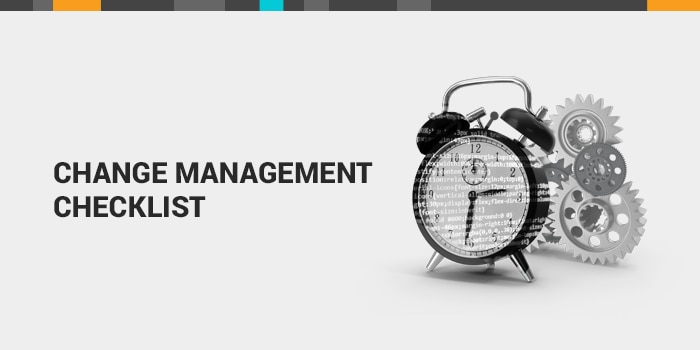IT pros around the globe are increasingly embracing a more agile approach to service management. With that comes the need to audit the way your organization implements changes.
Because your IT landscape is changing as technology continues to evolve, analyzing the changes made at your organization is critical. This is where
change management enters the picture.
What is Change Management?
Change management can be applied to different aspects of an organization. When it comes specifically to IT service management (ITSM), change management is an
ITIL practice that helps
minimize the impact and disruption of changes to technology infrastructure while providing clear communication to key stakeholders.
Maybe your IT team is planning to push out compliance software that encrypts the hard drive of all employees. With a well-documented change management process in place, even in the event that the change isn’t initiated successfully, a backup (or rollback plan) can be implemented to minimize disruption.
Planning and Implementing a Change
Assembling a
change advisory board (CAB) is an important first step. Typically, an organization will designate a change manager who will create a change record, including details of what’s taking place, planned start and end dates, and any rollback or test plan your team has outlined.
As part of this initial brainstorm, it’s important to make sure you:
- Have a test plan for both the business and IT
- Clearly identified stakeholders
- A plan for creating backups ahead of a change
Implementing a Change
At the core of the change management process is a change plan. This can be a sequence of events that your team has identified that need to take place for a change to occur. If something goes wrong during implementation, your key stakeholders should be present to make decisions to minimize impact.
The Importance of Having a Rollback and Test Plan
One of the most important aspects of ensuring any change that is carried out won’t impact your company’s service lines is the
creation of a rollback plan. To help prevent potential downtime, you should be able to quickly restore data from a backup in the event a change causes problems.
Another key to successful change management is
having a test plan. After rolling out a change to your entire organization, the appropriate test group should ensure that the change was successful. It’s important that the agreed-upon change steps are followed, especially during the test plan phase, so stakeholders are in agreement from the start.
Three Cs to Know: Change Calendars, Collisions, and Configuration Items
Keep employees and stakeholders aware of what’s going on with
a change management calendar. Whether your organization uses Google, Apple, or Outlook calendars, adding these changes helps provide visibility for everyone across the organization, not just IT.
Avoiding a Change Collision
A
change collision occurs whenever, you guessed it, changes collide. This is when a current change overlaps with an existing change, and it is crucial to be aware of overlaps to reduce negative impacts to employees.
Using a change calendar can help prevent collisions by making sure changes are scheduled independently of one another.
Configuration Items
Managing the transition associated with implementing new technologies involves the creation of new configuration items (CIs) within a
configuration management database (CMDB). CIs are essentially the
what that is being changed, and they can range from staff and contractors to physical hardware.
CIs establish a relationship between people, assets, or even locations in order to analyze the impact a change may have on the organization as a whole.
The Importance of Approvals
Changes in IT often impact multiple departments, which is why it’s so
important to have the appropriate stakeholders on your CAB when making these key decisions. This helps to confirm the right decisions are made, so departments and stakeholders that may be impacted know what to expect with a change.
By practicing change management in an ITSM context, technology leaders can leverage the service catalog to facilitate these approvals on a per person and per department basis. Another benefit is that it enables you to keep a log of changes made over time.
Experience the Benefits of Change Management Today
Since ITIL defines a change as an addition, modification, or removal of anything that could have an effect on the IT services you provide, you want to ensure you have a modern change management solution at your disposal.
While it’s one thing to simply plan a change, an ITSM solution that connects your IT assets to future changes, incidents, or problems is imperative for making ITSM as efficient and effective as possible.
Start your free 30-day trial of SolarWinds
® Service Desk or
request a demo today to learn more and explore how to get started with your change management strategy.




